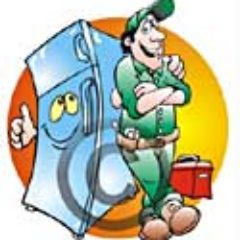Seattle Appliance Repair work on all brands and models dryers such as Kenmore, Whirlpool, Maytag, GE, Hotpoint, Amana and many more view the full list. If your dryer don’t come on, doesn’t dry clothes or you have any other issues with it, simply call our toll free number and we will take care of your problem. We are available 24/7 for your Seattle dryer repairs at:
800 465 0697
For parts only: 800-370-9281
Please note that all purchased appliance parts are shipped directly to you.
Our dryer repair area includes all of Seattle and the surrounding cities that are listed below:
| Newcastle Newport Hills Normandy Park North City Northgate | West Seattle Westwood Westwood Village White Center Woodinville | Snohomish The Highlands Thrashers Corner Times Square view the rest service areas |
The information below is designed to provide how to increase the life of your dryer and use it in the most efficient way, so that will save you money. It is posted with the understanding that we are not offering advice that you do it yourself. If expert assistance is required, the services of competent professionals are available 24/7 at our toll free phone number.
800 465 0697
There are some “do’s and don’ts” for your dryer
Do Is:
Do make sure that your dryer is connected to a 220 volt power source and is perfectly level. The dryer will work with 110 volt power, but you are starving the equipment for energy and will end up burning Up the dryer. Having your dryer working in an uneven condition will cause extra wear on rollers arid felt pads and will cause expensive service problems.
Do make sure that the dryer is vented to the outside. Venting a gas dryer into the air can kill you and your family by infusing carbon monoxide and countless other poisons into the a1r. Venting an electric dryer into the inside may not kill you, but it will still inject impurities from chlorine bleach, fabric softener, lint and dust, etc., into the air and adversely effect your family’s lungs and allergies. period chlorine. Over a period of time the chlorine will even corrode your plumbing.
Do make certain that the length of the vent line running between the dryer and the vent is not more than 14 feet with a metal elbow at the carver arid the vent.
Do make certain that the dryer vent line is the “old fash¬ioned” rigid metal vent.
Flexible plastic vent lines are easier to install. But please folks, do not use them. They are illegal in some areas. They are nothing but fire traps and could kill you.
Don’ts:
Do not use screws to fasten the joints of the vent line to¬gether. Use duct tape for fastening. Screws form little lint traps inside the vent line and can cause a fire hazard.
Do not dry vegetable oil soaked dishcloths in your dryer after washing. They still contain enough oil to be a fire hazard and could burn your house down.
Do not store flammable materials near or on top of the dryer.
Do not close laundry room doors or restrict the amount of fresh air available to the dryer. You need 200 cubic feet of air per minute to operate the dryer properly.
Don’t dry fluffy sweaters using fabric static sheets.
Don’t operate your dryer while you shop, sleep, or are not in the vicinity. A dryer is a very handy, but potentially a very dangerous appliance. Please believe me, ten minutes of inattention could Cost you your house, maybe your loved ones lives. When you load a dryer put the clothes in singly, or at least in small handfuls.
Do not just throw in a great big jumbled up lump of clothing into the dryer. It can throw the dryer out of kilter and cause permanent damage to the mechanism.
Never overload a dryer. The weight of the wet clothing can cause enough strain to break the rubber belts that turn the drum and will cause increased wear on the rollers causing premature replacement.
Under loading a dryer can also create problems because the clothing is not tumbling properly. If you only have a few things to dry add a couple of towels to the load and you will increase the dryer’s efficiency.
Make certain that all clothing you dry in a dryer has gone through the spin dry cycle in the washing machine. If you notice that the clothing coming out of the washing machine after the spin dry cycle is still very wet it means that the washer was overloaded, or that the washer is not spinning fast enough for some reason. Water draining from over wet clothing can drip on the ignitor or the electric heating element and cause a short. An accumulation of
water inside the machine can cause rust inside the dryer and it will stains on your new white shirts can make you a very unhappy camper.
Always clean the lint filter after every use. Letting the filter get plugged up can cause a fire and will certainly impede the air flow, wasting energy dollars and increasing the wear on your clothing. Older dryers have a very high heat factor and dry clothing more rapidly than modern dryers. The older models are not nearly as energy efficient and are much harder on your garments.
If expert assistance is required, the services of competent professionals are available 24/7
